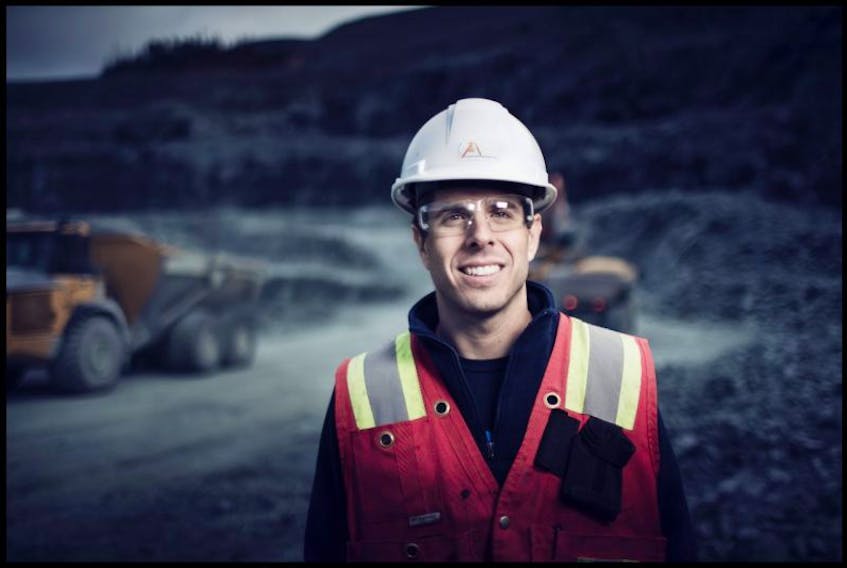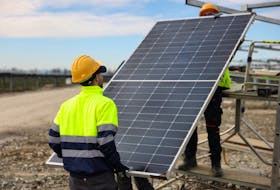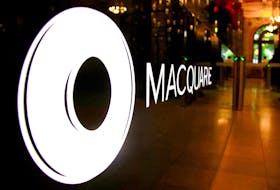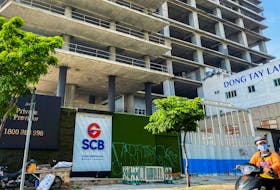And the junior miner wants to fill it, likely starting with the tailings of ore from its Guysborough County’s Goldboro gold property about 185 km northeast of Halifax, N.S.
Robert Dufour, Toronto-based Anaconda Mining’s chief financial officer, said in an interview recently the company is hoping to get the green light to turn the open-pit mining operation into a giant tailings pit soon.
It’s 150 metres deep and 350 metres across. Turning it into a tailings pit would be a major coup for the junior miner. Another tailings pit Anaconda Mining just finished building last year cost it $1.9 million and is nowhere near that size.
“It would give us the possibility of 15 years of tailings,” said Dufour. “I’ve seen that done elsewhere and once you fill it back up, you can cap it and vegetate it. It can return to its natural state.
“It’s pretty fascinating to see it after the fact,” he said.
The plan to use the dying open pit mine for tailings has been in the works for years. And it comes just as Anaconda Mining is also eyeing its newly acquired gold-rich Goldboro property, a deposit it picked up in a share swap with Orex Exploration earlier this year. Under that deal, Orex became an Anaconda Mining subsidiary.
The company, which is still undertaking its preliminary economic assessment of the Goldboro site, is buzzing with excitement over the results of samples from holes drilled on the property for geotechnical and engineering work.
Those early indicators suggest the Nova Scotia property has ore that is almost four times as rich in gold as the stuff being mined at the Pine Cove pit in Newfoundland, said Dufour.
“We’ve gotten the highest grade of gold ore they’ve ever seen,” he said. “What we can do with Goldboro is pretty exciting.”
That preliminary economic assessment is expected to be completed before the end of this year. If it’s a go, Anaconda Mining is planning to mine the ore, ship it to its Pine Cove mill, process it there, and put the tailings in the already-built pit.
“We’re looking at leveraging the infrastructure we have at Pine Cove,” said Dufour. “All that infrastructure is already built. The mill is permitted and licensed and there is a tailings facility.”
Anaconda Mining’s current mining operation, its Pine Cove pit, which is part of its Point Rousse project near Baie Verte in Newfoundland, has just come off a solid year of production.
During its 2017 fiscal year which ended May 31, the company sold 15,562 ounces of gold, only marginally less than in 2016, even though it mined lower-grade ore.
In 2017, Anaconda Mining took nine per cent more ore out of the ground but it was a lower grade as the crews went further down. Inclement weather also limited the mine’s operations to 58 days during the fourth quarter of the year.
That lower-grade ore recovery is expected to continue through into this year until the Pine Cove pit is shut down permanently. The current plan is to then move to the company’s nearby Stog’er Tight deposit in the same Point Rousse project.
Despite the slight drop in production, Anaconda Mining recorded a roughly 5.3 per cent increase in revenues in 2017, up to almost $25.7 million from about $24.4 million the previous year.
Stronger gold prices fuelled that revenue growth, with the company enjoying a nine per cent increase in its realized gold prices, up to $1,651 per ounce from $1,520. Anaconda Mining also generated about $938,000 from the sale of waste rock to be used as aggregate last year, something it did not have the previous year.
The company's bottom line, though, is still in the red.
Anaconda Mining ended the year with a net loss of more than $3.6 million, up more than 165 per cent from its loss of almost $1.4 million in 2016.
According to Dufour, the losses stem from the company re-investing into its mining operations and also higher-than-expected costs on the books for the depletion of its mining resources at Pine Cove and the depreciation of that mining equipment. Those costs rose 36.5 per cent last year.
Anaconda Mining invested roughly $3.4 million from its operating revenues back into its mine last year, including about $700,000 for mill upgrades and the $1.9 million for the new tailings facility and a pond to treat wastewater.
The junior miner, whose stock is traded on the Toronto Stock Exchange under the ANX ticker, has a market capitalization of $28.6 million.









